Legend has it that the powerful demon Mahisasura once placated the gods through severe penances. When the pleased gods offered him a boon, he sought immortality. This request being denied, he thought up a clever ploy and asked for a boon whereby only a woman could slay him in battle. He thought that a woman would never be able to match his physical prowess, and therefore, for all practical purposes he would become immortal anyway. Thus empowered, Mahisasura began wreaking havoc on heaven and earth.
Defeated in battle, the gods combined their divine energies and created Shakti (the primordial, cosmic, feminine energy), a goddess with varied manifestations, one of which was Durga. Armed with weapons given to her by the gods, Durga rode off into battle, mounted on a lion. A long and fierce battle ensued in which the demon Mahisasura was finally slain. The Goddess Durga is therefore celebrated as “Mahisasura-mardini” (the slayer of Mahisasura). She is the Mother Goddess, the supreme power that vanquishes all evil forces.
Initially, this Hindu festival in India was celebrated in the spring. However, today, the autumnal celebrations far outweigh the original puja of the Devi. The autumnal celebration, according to the epic “Ramayana“, started when Ram paid obeisance to the Goddess before he went into battle with the demon king Ravana to rescue his wife Sita, who had been abducted by Ravana. Since this was an untimely invocation of the Goddess, the Durga Puja conducted by Ram is also termed as “akalbodhan” (out of turn/ untimely worship).
Following the example of Ram, the Durga Puja currently is held for anywhere between 5 days (Durga Puja)-10 days (Navaratri – where 9 forms of Shakti are venerated) across different states in India.
While the basic tale behind the Durga Puja remains the same, the Bengalis have a slightly more personalized approach to the Pujas (or ‘Pujo’ as it is pronounced in Bengali). It is believed that Durga is the daughter of Bengal and during these 5 days she visits her parental home along with her 4 children (Ganesh, Lakshmi, Saraswati, Kartikeya) and 2 close friends. Interestingly, her husband Shiva does not usually accompany her on this trip. He stays behind, letting his wife and children visit Earth and enjoy all the pampering from their Bengali relatives.
Kolkata Musing tells us why he feels that the city's Durga Puja has earned the right to be labelled ‘unique’.
What is unique to Kolkata’s Durga Puja is the quest for creativity, the insatiable urge to create something new. And it is for this reason that I will always feel that Kolkata’s Durga Puja can perhaps never be paralleled.
The creativity is amply evident, year after year in the Puja motifs – ‘themes’ reflected in the pandal design and decoration of the Durga protima (Durga idol). There are also numerous awards given away each year to innovative, creative, environment-friendly (a relatively new entrant in the evaluation parameters) pujas that also take crowd safety into account.
Saurabh Dhanuka writes on his blog:
[…]the Durga Puja is an essence of all the passions of a Bengali, his culture, love, emotions, warmth of being together, the ultimate joy of celebration. They feel great pleasure in competing with each other on pandal making.
Here are a few themes from this year's Pujo.
The Nepal theme – Appreciated by the Nepal Tourism Board and the consulate-general of Nepal, this puja in South Kolkata reflected Nepali art and architecture in all its glory, from the pandal, a replica of the Yakshewar Mahadev Temple in Bhaktapur, to the Durga idol inspired by the four-headed Nepalese deity Taleju Bhavani.
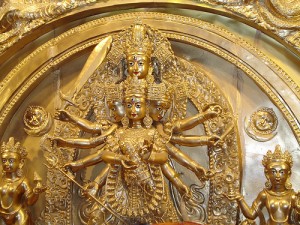
Durga idol inspired by the Nepalese deity Taleju Bhawani. Originally uploaded by Anil m, used under Creative Commons Licence
Environment/climate change as puja theme – It was heartening to see that this year many puja organizers focused on environmental and climate change issues in their puja themes. Innovative and creative art forms explored these issues, aiming to make the visitors more aware about the environment. An example:
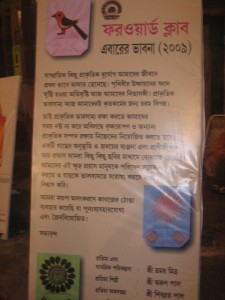
A board outside a puja pandal explains issues such as global warming and the need for recycling resources
And inside, hand-painted paper packets replace traditional decoration materials, to drive home their point.
And there were many, many more, strewn across the city and also across the state.
Apart from the pandals and idols, there were the decorative lights that gave the city its glitter by night. Thousands of people poured out of their homes to celebrate the days and nights with food, drinks and ‘pandal-hopping’ (visiting one puja after another).
And of course, many of the lights also carried a message, be it social or environmental in nature.
The 5 days of festivities ended with Dashami, the day of immersion. This is the day when the Goddess returns to her marital home in the Himalayas. But not before the married women give her and her family a warm send-off with gifts, sweets and lots of vermilion for a long and happy conjugal life.
This is followed by ‘sindoor khela’ (the vermilion ceremony) a ritual by married women where they smear sindoor (traditionally, sindoor/ vermilion on the forehead/ parting of the hair is the mark of a married Hindu woman) on each other and share sweets, fun and laughter.
Photo credit: The photo above is by Avik@firstdays.
Finally, all the idols are taken to the lakes/ rivers for immersion. The pandal is dismantled and life goes on as usual, with the Bengalis beginning their wait for the year to come. After immersion, it is time again to meet and greet friends, family, relatives and all other near and dear ones as it is Vijaya Dashami, the celebration that coincides with Dussehra, the victory of Ram over Ravana.
Not only is it celebrated across the country, Durga puja is celebrated by Bengalis world-wide. Here are some photos by our South-Asia editor Rezwan of puja celebrations in Dhaka, Bangladesh. Also, Dithi posts some snapshots of puja celebrations in Geneva. In Zurich, Durga puja festivities brought the Bengali community together, like it has been doing for the past six years. Am sure many of you readers will know of a Durga puja that is celebrated in your part of the world. For wherever there are Bengalis, the Durga puja cannot be far behind.
You can enjoy more Durga puja 2009 photos here. For those of you readers who would like to know more about Durga Puja, this site could made for an interesting read.

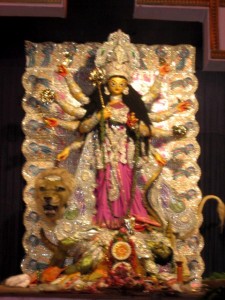
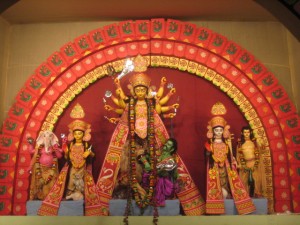
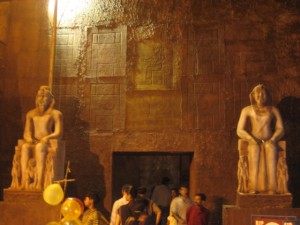
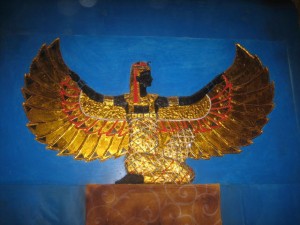
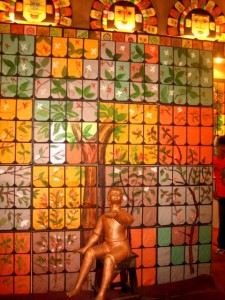
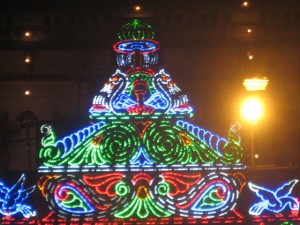

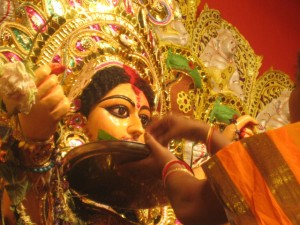
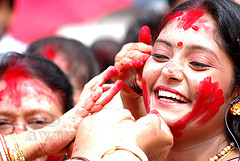




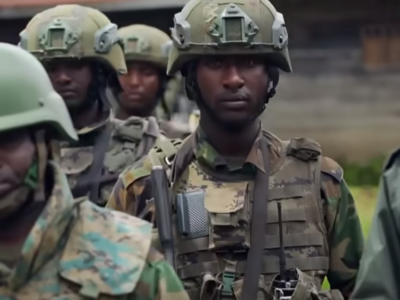

9 comments
bhalo korechen!!!! great article-pictures…
@kbw – Thanks. Hope the article helps people to get a little more familiar with this festival.
I really liked this post and its photos! Thanks Aparna…
@Juan – am glad you enjoyed it, will try to have more posts on culture from now on :-)
Great post. This is what proves to write as a journalist about everything.